St Margaret’s Hope
Former Residence of the Flag Officer Scotland and Northern Ireland
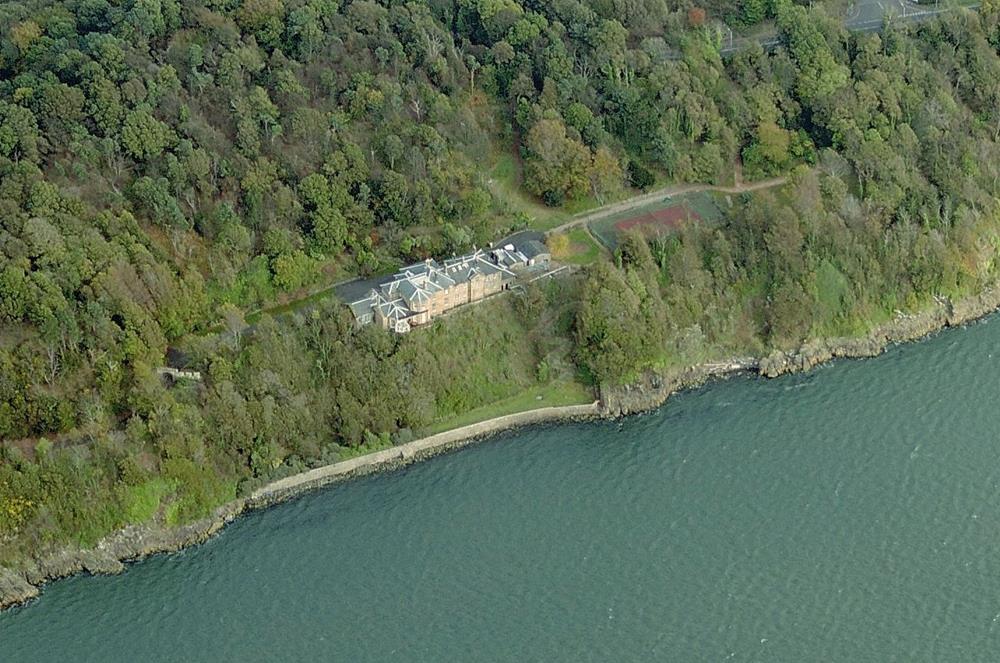
Contents
Introduction
History of Occupants 1916 to 1996
Description from British Listed Buildings
Norwegian Royal Family Connections
King George VI and Queen Elizabeth (the Queen Mother)
20th Century Photographs
2021 – A Sad Coda
Introduction
St Margaret’s Hope, on a steep hillside overlooking the Forth, with the craggy eminence of St Margaret’s Head in the background, is the former residence of the Flag Officer Scotland and Northern Ireland and Naval Base Commander Rosyth.
The site has a fine view westward over the estuary, to the North, the Rosyth Naval Base; to the South, across the water, the harbour of Port Edgar and Hopetoun House; and to the East, the Forth Road and Rail Bridges.
The land on which the House stands was originally purchased in 1739 by the Dunfermline Guildry, being part of the lands of Ferryhill belonging to Dunfermline Abbey and Friary. The book ‘The story of Inverkeithing and Rosyth’, (Published in 1938 by the Rev William STEPHEN) says the land was acquired in 1825 by Elias Cathcart of Auchindrae who, in or soon after 1829, built the original part of the house and called it St Margaret’s. The name is derived from the story of Queen Margaret’s journey to Dunfermline. St Margaret fled from the Normans at the time of the Conquest seeking shelter from storms in South Ronaldsay in the Orkneys; the village where she landed was called St Margaret’s Hope the word ‘hope’ being once used to describe a roadstead where ships could lie at anchor in safety. In 1069 she sailed south and came ashore in the sheltered bay below these cliffs, hence the name of the house. She was given refuge by Malcolm CANMORE, the King, then living in Scotland’s ancient capital of Dunfermline; she founded the Abbey at Dunfermline and subsequently married King Malcolm.
In 1855 Captain William, ELDER, the Company of Artillery Volunteers, became the owner. He died in 1882 and it was from his nephew, W G ELDER, and the latter’s son, W H ELDER, that the Admiralty requisitioned the house for the Commander in chief Coast of Scotland in 1916. Subsequently the House and grounds were purchased outright during the First World War for £5,500 at which time the property became known as ‘Admiralty House’.
The Lodge, which was two cottages until 1916, is all that now remains of the original village and harbour. Five other cottages in various states of disrepair survived on the land below the driveway until the 1960s, when they were demolished to make room for the building of the lower garages. Of the small bay, which lent its name to the house, little now remains. This area, with the exception of the cove known as Cult Ness, was reclaimed during the First World War, using the debris excavated by the building of the Dockyard. The Marshland contains the remains of the narrow gauge railway used in the dockyard’s construction and the village and old quarry pier where ships were regularly berthed.
The Marsh provides a stable and protected habitat for several species of water fowl. It was here in 1954 that the Wilson’s Phalarope was first sighted in the UK. Now, although lacking statutory protection, this area is designated a site of interest by the Scottish Wildlife Trust and is recognised by Dunfermline District Council.
Approaching the house down the drive from the North Queensferry Road there is a large stone archway surmounted on either side by shields bearing Coats of Arms. The arch was knocked down by an inconsiderate lorry in 1987 but rebuilt in time for a visit by HM The Queen and HRH The Duke of Edinburgh in 1988.
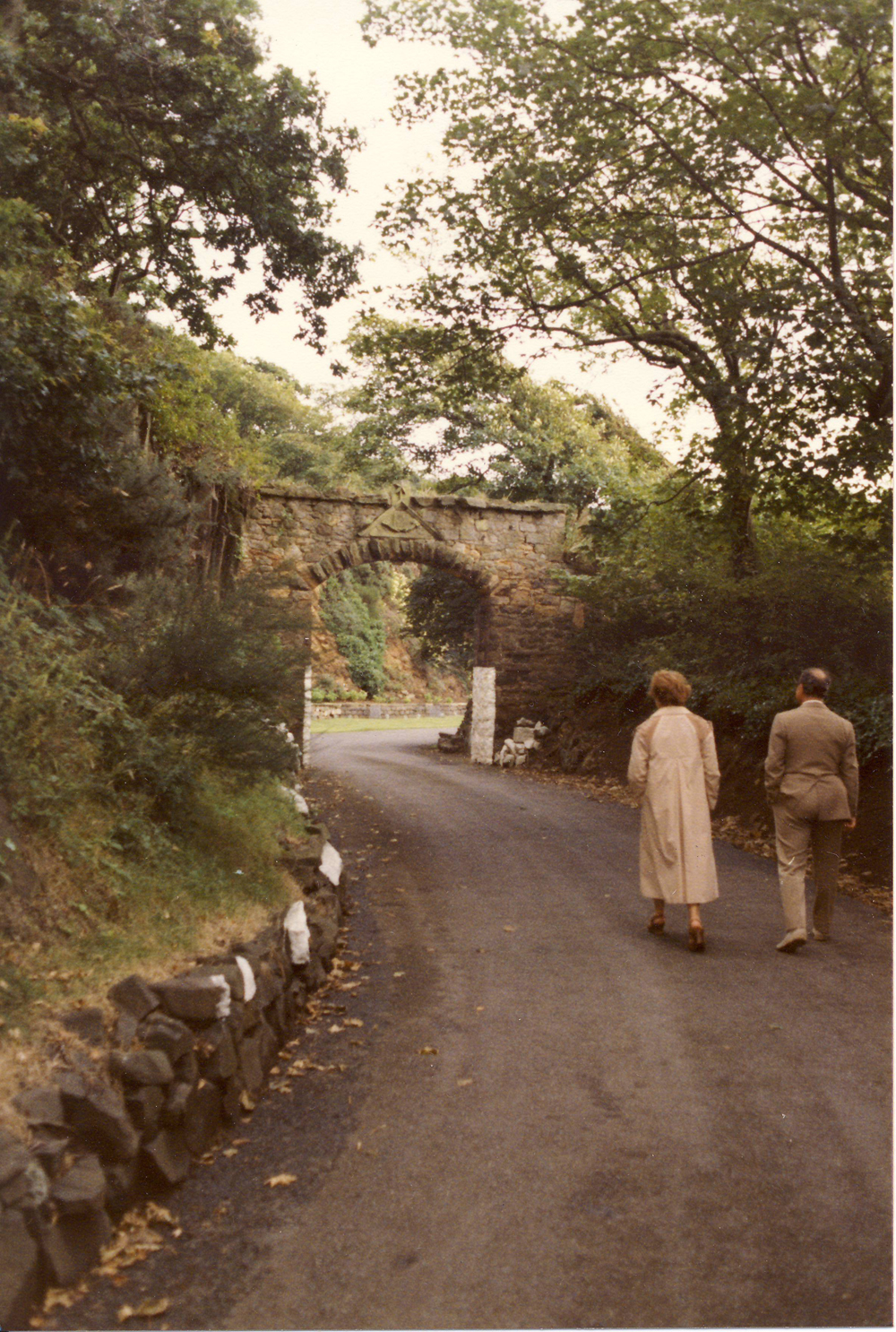
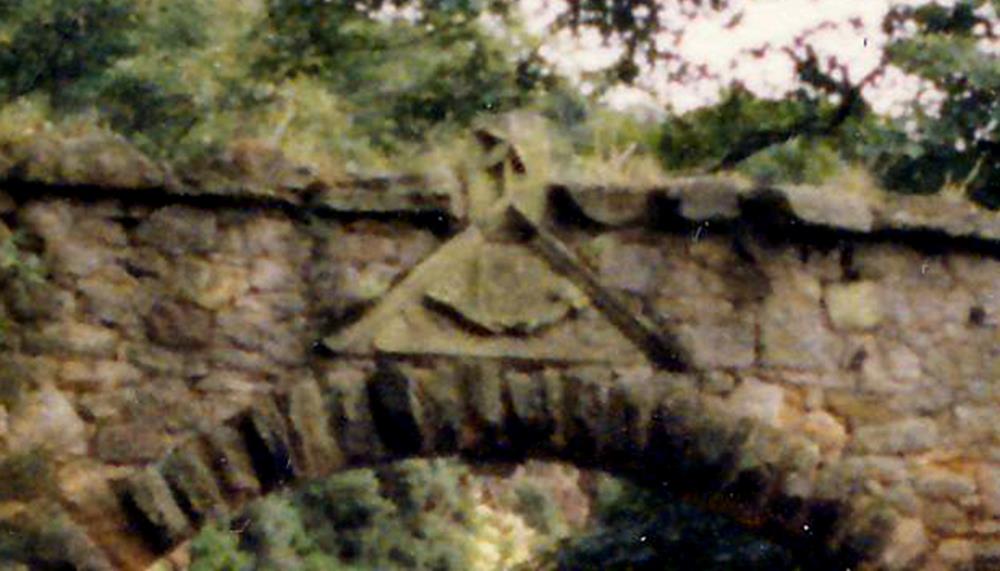
The shield on the south side bears the initials W N and I F with the date 1376. (For the connoisseur of Heraldry:- Arms: Per pale, dexter, or, on a bend Azure a crescent between two spurrowels of the first – NAPIER, Wright’s House, Scotland and sinister, Argent, three buglehorns Sable, stringed gules FORRESTER, Scotland.) The Latin motto ‘Sicut Olivafructifera’ translates ‘Fruitful as an olive tree’. The three hunting horns are the Arms of the Forresters of Corstorphine. So the combined Arms are therefore of William Napier and his wife, who would have been a daughter of the House of Forrester.
On the north side, the Coat of Arms has the initials W N and E P with the date 1570. (Again for the knowledgeable:- Per pale, dexter, Or, on a bend Azure a crescent between two spurrowels of the first NAPIER, Wright’s House, Scotland; and sinister, or, a fess chequy Argent and Azure between three stags heads couped gule PARK of that Ilk.) Again there is a motto in Latin ‘Didat Servata Fides’, which translates ‘Faith preserved maketh rich’. The Arms are those of William Napier of Wrychthouse, a Burgess of Edinburgh in the second half of the 16th century, and his wife Eliza Park. The shields belong to a much later period than the date they carry. It is almost certain that they have no historical connection with St Margaret’s. The presumption is that originally they formed part of the collection of armorial shields that are known to have existed at Wrychthouse, Edinburgh. They must have been acquired and set in their present position by a previous owner of St Margaret’s.
To the side of the arch is the old saluting base of the Commander in Chief Coast of Scotland. In more recent years the Admirals, now termed Area Flag Officers, have flown their flag in HMS Cochrane at Rosyth. The flag flying at the house today is only saluted by ships passing on ceremonial occasions, when the Admiral often acknowledges the salute from the Balcony, known as the Bridge.
The grounds, of about 20 acres, are mostly woodland but there is a walled garden of one acre, a putting green and tennis court. The summer-house situated above the garage was built by Ashburys at the turn of the century. It was originally the private railway carriage of the Admiral Superintendent of Rosyth Dockyard and was renovated and moved to its present position in 1985 shortly after the positions of Port Admiral Rosyth and Flag Officer Scotland and Northern Ireland were combined. At the same time the pergola by the lawn was erected. This is made up of old poles from the Dockyard which were probably once used to support staging for ships in dry docks. Also in the grounds are several mine watching posts dating from the Second World War and the remains of the Jetty used by the Admiral’s barge
The Inter-war years saw the virtual closure of the Navy’s most modern dockyard, to the exasperation of Admiral Beatty. The post of CinC Coast of Scotland was abolished in 1922 and the House was occupied for a short time by Captain NOBLE, Commanding officer Scotland. The decision was soon taken to sell or lease the house and it was Advertised in the Scotsman, Glasgow Herald and Times. It was eventually let on 22 May 1922 to a private tenant Mr J G Watson who died on 31 December 1931. His widow terminated the lease on 15 May 1932, but subsequently decided to take a new lease until 1 May 1933. The Royal Navy reoccupied the House on 22 July 1937 when Rear Admiral E C O Thomson CB DSO, Rear Admiral and Commanding Officer Coast of Scotland, moved in. Since then, apart from a short period when the House was divided up for the Chief of Staff and Admiral’s Secretary, the house has enjoyed virtually uninterrupted occupation by successive Flag officers and their families.
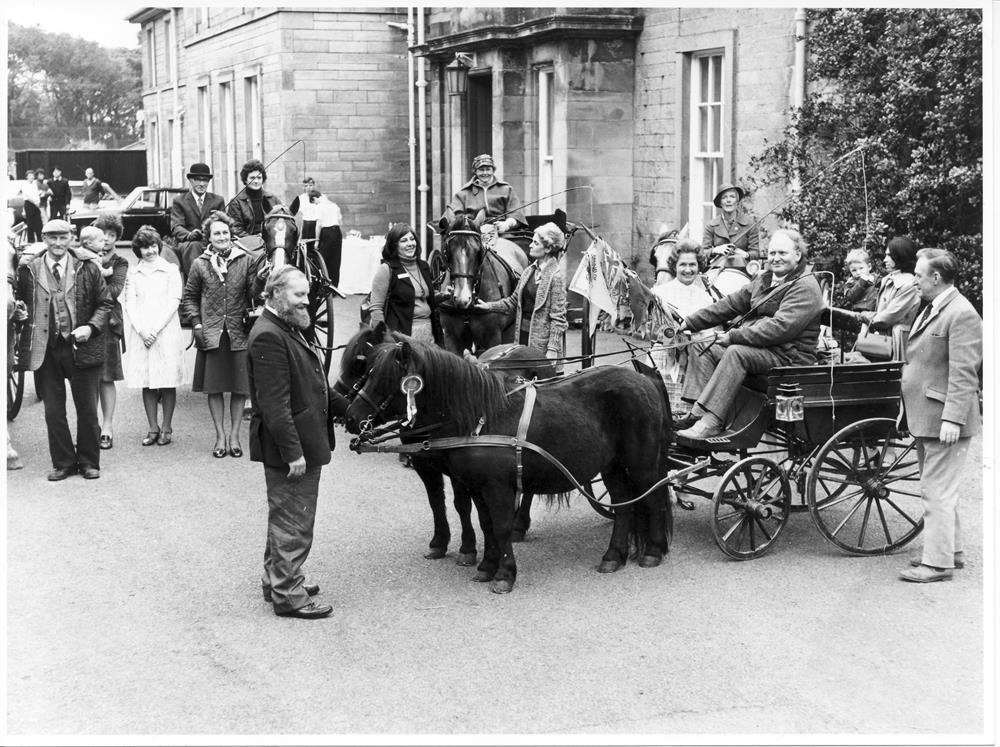
At the front door – “Driving for the disabled”
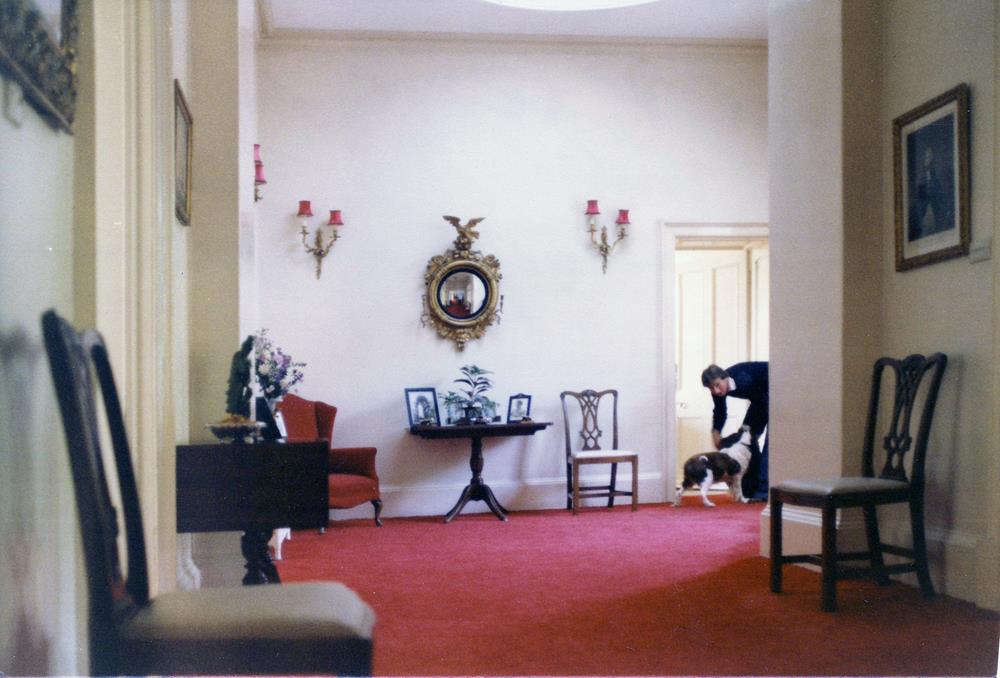
Inside the front door
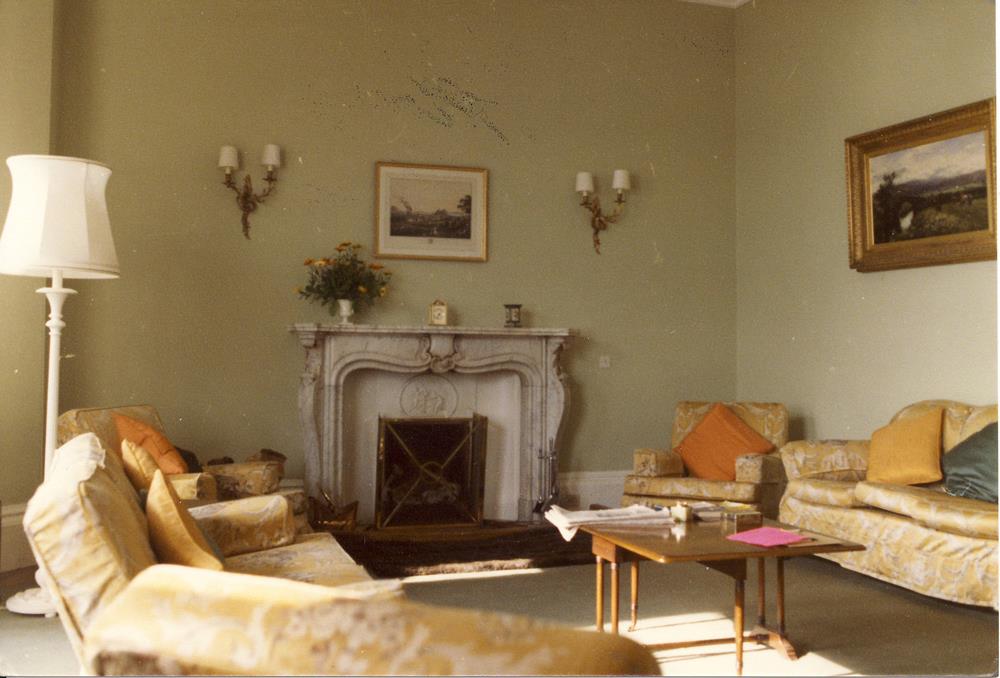
The Drawing Room – one end
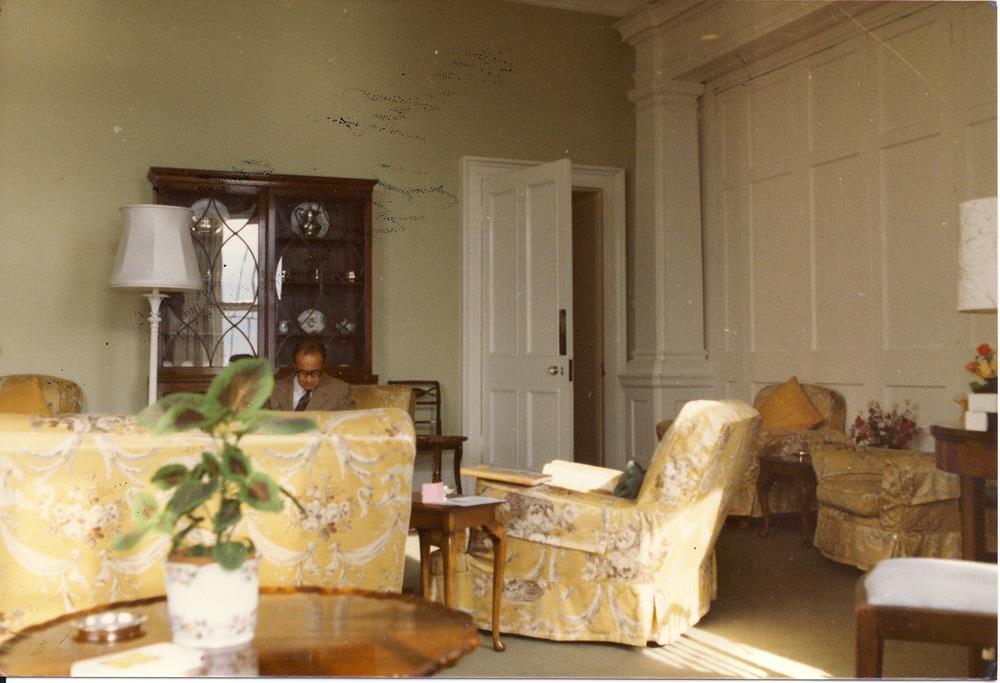
The Drawing Room – other end
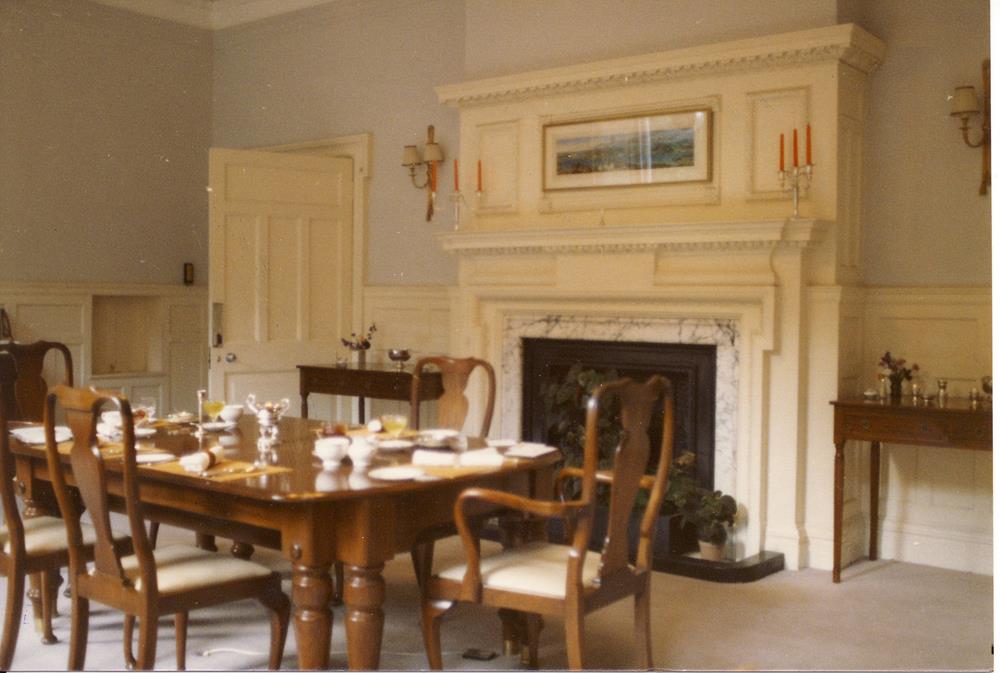
The Dining Room (the table could extend to double this length)
Occupants of St Margaret’s Hope with note of distinguished visitors and mention of ‘works’ items – 1916 to 1996

| 31 May 1916 | St Margaret’s occupied on lease by Lady Bradford (wife of Vice Admiral Bradford) comprised: Dining Room, Smoke Room, 6 Bedrooms, 3 Servants Bedrooms, Food Cellars, Kitchen and Pantry. Electric light by oil engine on premises, shed for motor car, 2 cottages at Lodge and 5 other cottages. Rent £130 pa.
|
| June 1916 | Estimate prepared for: taking down east side of house and rebuilding; alterations to rooms and redecoration; improvements to cellars, roads, drains and fencing; installing central heating system and. building new motor garage – total £17,500. Landing stage £1,000. |
| 9 June 1916 | St Margaret’s offered for £11,500.
|
| June 1916 | North Cliff – taken as temporary residence for C-in-C Sir Frederick Hamilton GCVO KCB, furnished, at £40 per month. (This had been occupied by Admiral Hood)
|
| 7 July 1916 | Admiralty approved expenditure of £10,500 on St Margaret’s.
|
| 13 July 1916 | St Margaret’s, including the furnishings, taken over under provisions of the Defence of the Realm (Consolidation) Regulations 1914. Cottages similarly taken over on 18 July 1916. |
| 23 August 1916 | Tender of £426 accepted for heating and hot water installations. Electric bulbs and wiring (Callenders) £52.15.0Plumber work accepted (Cochrane, Leith) £261.1.3Fixing kitchen ranges (Carron Co) £83.19.9 |
| December 1916 | Lodge, originally 2 houses, altered and occupied by the gardener to the C-in-C. The Welldean Cottages numbered 5, and one house was temporarily occupied by the gardener. This house has since been altered to provide Battery and Engine Rooms, as well as providing one extra bedroom to the adjoining house which is occupied by the C-in-C’s Butler. The third house has been formed into a garage. The fourth and fifth houses are unoccupied.
|
| February 1917 | Work on C-in-C’s Jetty stopped owing to difficulty of obtaining labour and urgency of need to complete Port Edgar.
|
| March 1917 | Flagpole and Tabernacle approved at cost of £152.
|
| April 1917 | North Cliff House vacated by C-in-C. Davits fitted to Jetty (ex HMS TRIUMPH). St Margaret’s occupied by C-in-C Sir Frederick, Hamilton GWO KCB. Rateable value £210.
|
| July 1917 | Turf for gardens brought from Hawkcraig, Aberdour (name of gardener D Mason)
|
| 4 October 1917
|
Admiral Sir Frederick Hamilton GCVO KCB, died.
|
| 3 October 1917 to 24 Mar 1919
|
Succeeded by Admiral Sir Cecil Burney GCMG KCB.
|
| October 1917 | Proposal to convert a bedroom over kitchen on the first floor into a bathroom for female servants at cost of £45 rejected. Sink and cupboard installed for £20!
|
| November 1917
|
Approval to purchase house. |
| February 1918 | Purchased by Admiralty at £5,500 plus £540 for buying out the Superiority of Feu (charged to Vote 10 subhead 9). Disposition dated 6 and 8 June 1918. Vendors W C Elder and his son, W H Elder. Superiority purchased from the Trustees of the late Henry Aitken and Mrs Margaret Orr. |
| June 1918 | Conservatory to Smoking Room added at cost of £159.10.0.
|
| August 1918 | Tennis Court added £96 (En-Tout-Cas). Marking tapes and pins £25. (Converted to all weather surface in 1986).
|
| February 1919 | New fireplace in Drawing Room proposed at £250 Folding doors in Drawing Room £ 75 Enlargement of Servant’s Hall £130 Stable for pair of horses £150 |
| March 1919 | Admiral Sir Cecil Burney vacated on 24 March 1919, having installed a bath (now in the Orkney suite) for £7.10s at his own expense! 31 March 1919 to 27 Feb 1922 Succeeded by Admiral Sir Herbert Heath KCB. |
| March 1919 | Approved for fireplace £250 Draught-proof curtains £ 44 Servants hall improvements £200 Stable £356 Total £850 Work Completed May 1919. |
| November 1919
|
House visited by the Shah of Persia. Screen erected in footman’s room £12.10.0.
|
| September 1920
|
Landing steps and approach road constructed at cost of £630.
|
| May 1921 | Proposal to increase size of laundry at £115. Stable door widened at cost of £17. House visited by HIH The Crown Prince of Japan. |
| October 1921 | Annual costs of maintenance for previous 3 years, £564 pa.
|
| January 1922 | House connected to Admiralty mains at cost of £763.
|
| 22 Feb 1922 | Admiral Sir Herbert Heath vacated house.
|
| March 1922 | House occupied by Captain Noble RN (Chief of Staff) on abolition of post of C-in-C Coast of Scotland and decided to sell or lease house. Advertised in Scotsman, Glasgow Herald and Times. With reduction of the Navy in Scotland the house was let to a private tenant from 22 May 1922 – Mr J G Watson. Tenant died 31 December 1931. His widow terminated lease on 15 May 1932 but subsequently decided to take a new lease until approximately 15 May 1938. |
| 15 May 1938 to 19 November 1938
|
house re-modernised at a cost of £1,364.
|
| 22 July 1937 to 3 August 1939
|
House occupied by Rear Admiral E C O Thomson GB DSO, known as the Rear Admiral and Commanding officer Coast of Scotland.
|
| 3 August 1939 to 14 Apr 1942
|
House occupied by Admiral Sir Charles Ramsey KCB.
|
| 15 April 1942 to 1 June 1944
|
House occupied by Admiral Sir Wilbraham Ford KCB KBE.
|
| 1 June 1944 to 16 July 1946
|
House occupied by Admiral Sir William Whitworth KCB DSO. Known as Flag officer Scotland and Northern Ireland. |
| 17 July 1946 to 30 June1948
|
House occupied by Admiral Sir Frederick Dalrymple-Hamilton KCB. |
| 1 July 1948 to 31 July 1950
|
House occupied by Vice Admiral Sir Ernest Archer KCB CBE. House was then temporarily vacated as Flag Officer Scotland and Northern Ireland and Admiral Superintendent’s posts became one, and Vice Admiral Sir Angus Cunninghame Graham. KBE CB, the then Admiral Superintendent, continued to live in Castlandhill House. St Margaret’s was converted into two Married Quarters. The Chief of Staff, Captain R J 0 Otway-Ruthven DSO RN took up residence in one half on 15 September 1951 and Commander (S) I G Mason RN in the other half on 15 October 1951.Captain Otway Ruthven vacated on 28 July 1952 and was succeeded by Chief of Staff Captain R B Honnywill RN on 3 August 1952.Commander Mason vacated his portion on 17 September 1953 and was succeeded by Commander (S) R T Owen OBE RN on 20 September 1953. |
| November 1953 | St Margaret’s House again required for a Flag Officer; Chief of Staff, Captain Honnywill, vacated his portion on 12 November 1953, and Commander Owen his portion on 17 November 1953.
|
| 15 February 1954 to 28 February 1956
|
House reconverted to a single residence and Rear Admiral W G A Robson CB DSO DSC, Flag officer Scotland, lived temporarily at Castlandhill House during reconversion, moving into St Margaret’s on 15 February 1954.
|
| 1 March 1956 To 29 Jul 1958
|
House occupied by Vice Admiral Sir John Cuthbert KBE CB.
|
| 10 March 1956 | House renamed from St Margaret’s Hope to Admiralty House.
|
| 30 July 1958 to 28 November 1959
|
House occupied by Vice Admiral J D Luce, CB DSO OBE.
|
| 3 December 1959 to 19 September 1961
|
House occupied by Vice Admiral Sir Royston Wright KCB DSC*.
|
| 19 September 1961 to 25 June 1964
|
House occupied by Vice Admiral Sir Arthur Hezlet KBE CB DSO* DSC, as Flag officer Scotland and Northern Ireland. |
| 26 June 1964 to 19 July 1966
|
House occupied by Vice Admiral Sir David Gregory KBE CB DSC*.
|
| 19 July 1966 to 18 Jun 1968
|
House occupied by Vice Admiral Sir John Hayes KCB OBE.
|
| 12 October 1967
|
Visit by HRH The Duke of Edinburgh who lunched at Admiralty House.
|
| 18 June 1968 to 5 May 1970
|
House occupied by Vice-Admiral Sir Ian McGeoch KCB DSO DSC.
|
| 9 May 1969 | Visit by HRH Princess Alexandra.
|
| 5 May 1970 to 18 July 1972
|
House occupied by Rear Admiral D A Dunbar-Nasmith CB DSC.
|
| 10 July 1971 | Visit by HM Queen Elizabeth, the Queen mother, who lunched at Admiralty House.
|
| 18 July 1972 to 14 Aug 1974
|
House occupied by Rear Admiral M N Lucey CB DSC.
|
| 14 Aug 1974 to 30 June 1977
|
House occupied by Vice Admiral Sir Anthony Troup KCB DSC*.
|
| 19 July 1976 | Lieutenant The Prince of Wales lunched at Admiralty House.
|
| 27 November 1976 | HM Queen Elizabeth, the Queen Mother, lunched at Admiralty House and planted a tree.
|
| 30 June 1977 | House occupied by Vice Admiral Sir Cameron Rusby KCB, MVO.
|
| 25 November 1979 | House occupied by Vice Admiral Sir Thomas Baird KCB.
|
| 27 Jan 1982 | House occupied by Vice Admiral R R Squires.
|
| 6 December 1983 | House occupied by Vice Admiral Sir Nicholas Hunt KCB, LVO. Extensive interior redecoration.
|
| 1 October 1984
|
HM Queen Elizabeth, The Queen Mother, lunched at Admiralty House and planted a tree.
|
| 10 May 1985 | House occupied by Vice Admiral Sir George Vallings KCB 20 October 1986 Admiral Sir Nicholas Hunt KCB LVO, CINCFLEET and CINCHAN hosts lunch for Lord Carrington Sec Gen of NATO and Major NATO Commanders at St Margaret’s Hope. |
| 20 October 1987 | House occupied by Vice Admiral Sir Jock Slater KCB, LVO.
|
| 8 May 1988 | HRH Lieutenant The Prince Andrew, Duke of York stayed overnight before joining HMS Edinburgh.
|
| 27 June 1988 | HM The Queen and HRH The Duke of Edinburgh lunched at St Margaret’s Hope during visit to the Royal Navy at Rosyth.
|
| 6 February 1989 | HRH Lt The Prince Andrew, Duke of York and HRH The Duchess of York lunched at St Margaret’s Hope and planted a tree.
|
| 14 February 1989
|
House occupied by Vice Admiral Sir Michael Livesay KCB.
|
| 17 April 1991 | House occupied by Vice Admiral Sir Hugo White KCB CBE.
|
| 11 Nov 1992 | House occupied by Vice Admiral C C Morgan.
|
| 1996 | House handed over to the Scottish Executive and then leased out to a private company, Universal Steels.
|
compiled from Bob Cubin’s notes.
Description from “British Listed Buildings“
Ernest Newton, 1916. Remodelling and substantial extension in neo-Georgian style of an earlier house (circa 1829), a large section of which remains intact forming part of N end of refashioned house. 2-storey and part single storey (at original house); single storey adjoining service blocks and modern garages to S. Coursed squared sandstone rubble; droved ashlar dressings; base course at 1829 block; cill course at first floor to both blocks; original openings at rear (sea front) elevation with moulded architraves, later window surrounds with plain architraves and recessed apron panels set within architraves; carved panel, dated 1916 to central advanced bays.
E (PRINCIPAL) ELEVATION: 11 bays, projecting and receding irregularly. 7-bay 1916 addition to left: 2-storey, 3-bay section advanced to far left; 3 ground and 1st floor windows. Recessed section to right; ground floor window; 2 1st floor bipartite windows. Advanced 2-storey, 3-bay section to right; 3 ground floor windows; 2 1st floor windows, flanking carved central panel with Royal Naval wreath and anchor motif, dated 1916, hood-mould above. Windows to right and left return of advanced right hand section at 1st floor. Recessed 4-bay 1829 section to right: 2-storey, single bay to left; ground and 1st floor windows. 2-storey single bay section to right further recessed with projecting 3-bay ashlar pilastered entrance porch, shallow pediment and blocking course; centre bay of porch slightly advanced with 2-leaf timber panelled outer doors and half-glazed inner door; flanking windows; 1st floor window centred above porch; small square window to left. Single storey pedimented bay to penultimate right bay with window (roof lights illuminating cupola within). Wide end-bay with blind window to far right.
N ELEVATION: partially seen, 2002. Open pedimented plain gable; small blocked opening to right.
W (SHORE FRONT) ELEVATION: 2 storeys on plinth course. 1916 addition to right: 6-bays arranged 2-1-2-1, window bays projecting; right hand projecting bay pedimented with tripartite window at 1st floor; further tripartite window to 5th bay left. 1829 block to left: 2 substantial canted bay windows (2 storeys to right, single storey to left), timber balcony with roof set between canted bays at ground floor, small modern timber conservatory projecting out from centre of left canted bay; single storey block deeply recessed to far left.
S ELEVATION: adjoining double piended single storey service block; central 1st floor window; rectangular piended dormer with bipartite window centred above.
Predominantly 12-pane timber sash and case windows. Piended and pitched roofs; grey slates; wide ashlar coped skews to single storey N gable; 7 coped stop-chamfered ashlar stacks to 1916 section; 2 octagonal stacks to 1829 section; circular clay cans.
INTERIOR: retains much of late Georgian interior in original house. Hall: located in 1829 section of house. Moulded door surrounds; key-blocked arch leading to S section of house (1916 addition); timber staircase with alternate barley twisted and rectangular section balusters; circular leaded cupola to right of entrance; Adam-style chimneypiece surround to N wall. Drawing room: located in 1829 section of house to rear. Long rectangular double room fronted by canted bay windows overlooking sea, divided by large pilastered opening, now blocked by permanent wall (circa 1996). Greek key and egg and dart cornice; moulded picture rail; white marble rococo/Louis XV chimneypieces (that to S with scallop and fern carving, that to N with scrolled heraldic panel over small scallop), both with 1916 neo-Georgian grates and slips with elliptical bas-relief panels depicting allegorical scenes. Dining room: located in 1916 section of house to front (now used as drawing room). Vigorous dentilled cornice; dado panelling; panelled surround and overmantel to 18th century-style fireplace with blue-veined bolection moulded marble slip set in lugged timber chimneypiece with plain pulvinated frieze and dentilled cornice; original cast-iron grate with swags, bows and violins. Board room: located in 1829 section of house, in single storey end block. Decorative rosebud and thistle cornice; moulded picture rail; projecting corner cupboard with gothic tracery timber panelled door.
BOUNDARY WALLS TO W (SHORE FRONT): coped random rubble wall to upper level bordering house and at shore encapsulating lower garden.
WALLED GARDEN TO S: circa 1829. Enclosing rectangular garden, tapering towards S. N wall forms boundary to Main Road. Random rubble; hammer dressed quoins. Double timber boarded door to centre of N elevation, timber boarded door to right.
ARCHWAY ON DRIVE TO N: earlier 19th century. Wide segmental rubble archway, incorporating relocated 17th century fragments from the Wrychtshouse, Bruntsfield (see Notes). Semicircular pediment to S with cartouche inscribed and dated “WN IF SICVT OLIVA FRVCTIFERA 1376” [Fruitful as an olive]; triangular pediment to N with coat of arms inscribed and dated “WN EP DITAT SERVATA FIDES 1570” [Faith preserved maketh rich].
Statement of Interest
B-group with St Margaret’s Hope gatelodge. St Margaret’s Hope is a small bay between Rosyth Castle and Long Craig. The site, on a steep hill, overlooks the Forth to the SW. This bay is known to be the place where St Margaret, future wife of King Malcolm of Canmore (1058-93) landed with her brother Edgar Atheling and her sister Catherine in 1069 on her journey to Dunfermline from Orkney. The land was acquired from the Guildry of Dunfermline in 1825 by Elias Cathcart of Auchindrane, who built the earlier house on the site in or soon after 1829, calling it St Margaret’s. This house, at the core of the present house, was presumably symmetrical, its N half largely intact, its S half absorbed by the 1916 additions.
The house passed to Captain William Elder in 1855 and subsequently to his inheritors; it was later acquired by the Admiralty for the Commander in Chief, Coast of Scotland in 1916, at which time Ernest Newton was employed. St Margaret’s Hope was known as Admiralty House during WWI. It remained the residence of the Rosyth Naval Commander until 1996, when it was handed over to the Scottish Executive and then leased out to a private company, Universal Steels.
Ernest Newton (1856-1922) was a major English Arts and Crafts architect and no other Scottish works by him are known to date. The rococo style fireplaces for the drawing room were acquired in 1917 after the house was taken over by the Admiralty. The Renaissance pediments at the archway were originally from the Wrychtshouse (wrights houses) built for William Napier (WN) and his wife, Eliza Park (EP) at Bruntsfield, which were demolished in 1800. Five cottages (known as Welldean Cottages) built on the estate on land below the existing driveway in the later 1800s, were demolished in the 1960s to make way for garages.
Norwegian Royal Family Connections
King Haakon, Princess Marthe and her three children photographed at Rosyth as they prepare to return to Oslo at the end of the war.
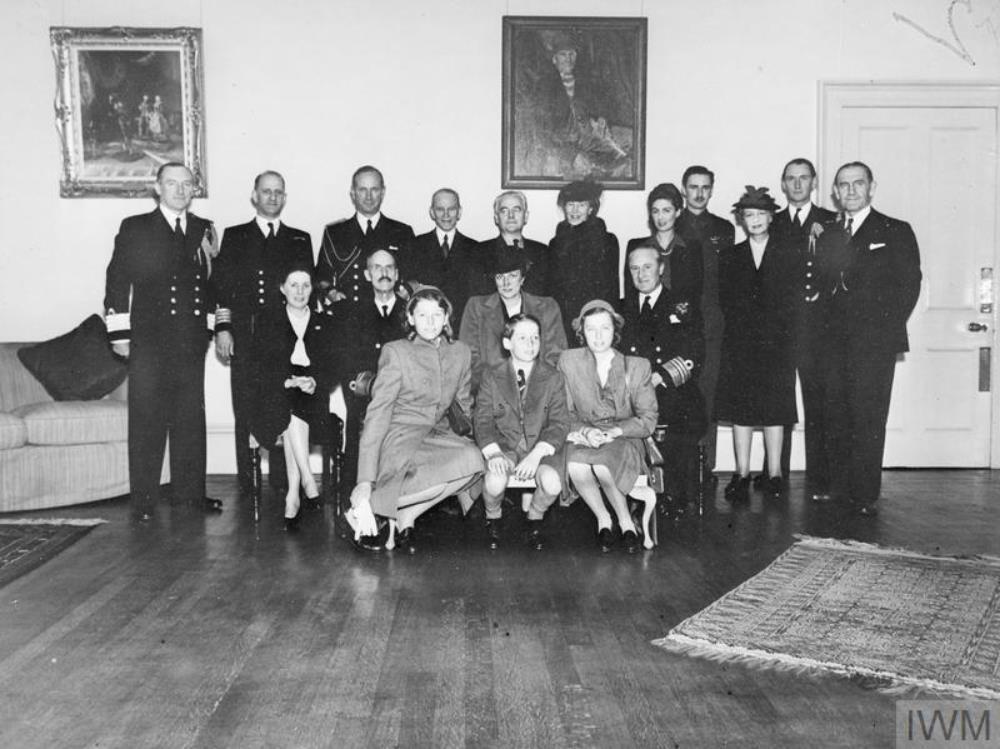
Group picture at Admiralty House, North Queensferry, before the royal party embarked in HMS NORFOLK.
Left to right:
Front row seated: Princess Astrid; Prince Harald; Princess Ragnhild.
Centre row: Lady Whitworth; HM King Haakon; HRH Crown Princess Marthe; Admiral Sir William J Whitworth, KCB, DSO, Commander in Chief Rosyth.
Back row: Captain (S) F R J Mack, CBE, RN; Captain J E Jacabsen, R Nor N; Captain R Bruusgaard, R Nor N, Aide-de-Campe; Monsieur E Colban, Norwegian Ambassador; Mrs Ostgaard, Lady-in-Waiting; Mrs G Alston; Major G Alston; Mrs F R J Mack; Lieutenant D R J Austin, RNVR; Lord Chamberlain Wedel Jarlsberg.
King George VI and Queen Elizabeth (the Queen Mother)
King George VI and Queen Elizabeth (the Queen Mother) at Rosyth. 9 March 1945, Admiralty House, North Queensferry, during the visit of the king
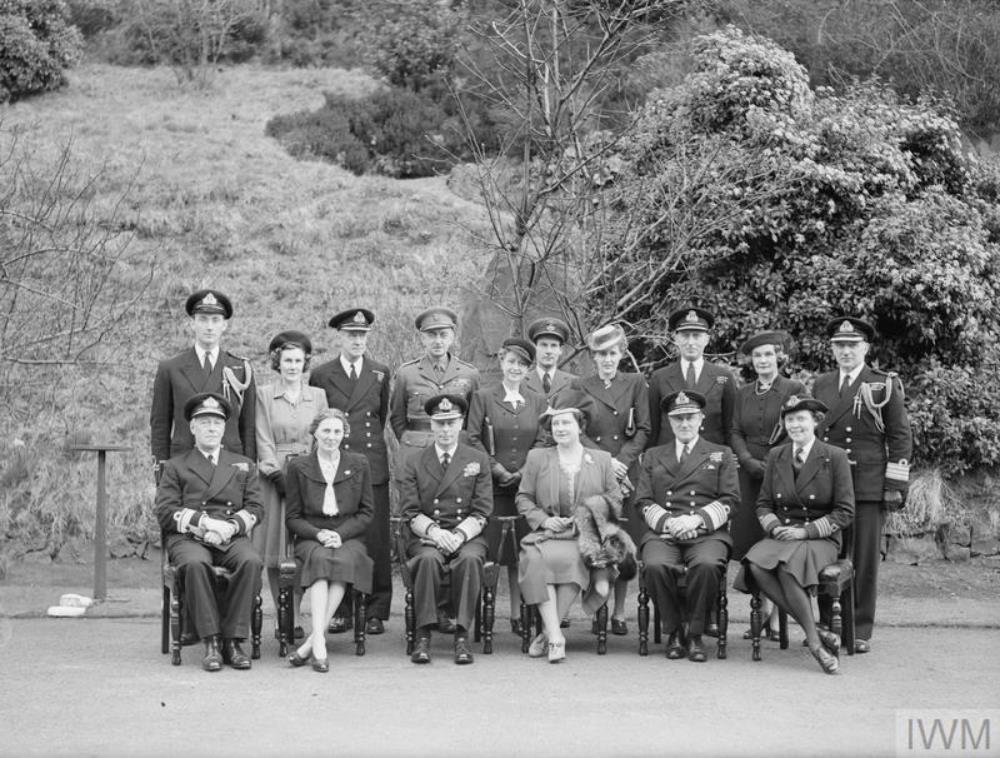
© IWM (A 27654)
Left to right: sitting: Rear Admiral H G Hovell, CBE, DSO, Admiral Supt Rosyth Dockyard; Lady Whitworth; HM The King; HM The Queen; Admiral Sir William J Whitworthy, KCB, DSO, Commander in Chief, Rosyth.
Left to right: standing: Lieut D J R Austin, RNVR, Flag Lieutenant to C in C; Mrs C C Hughes-Hallet; Commodore The Hon E R Drummond, CB, MVO; Sir Eric Melville, ECIE, Assistant P/E to HM The King; Mrs F R J Mack; Wing Commander F W Townsend, DSO, DFC, RAF, Equerry to His Majesty; The Countess Spencer, Lady-in-Waiting to the Queen; Captain C O Hughes-Hallet, CBE, RN; Mrs H G Hovell; Captain (E) F R J Mack, CBE, RN, C in C’s Secretary.
20th Century Photographs
In 1996, Admiral’s House was leased to Ronnie Inglis (Universal Steel, a private company.)
His daughter Sheona has kindly provided these photographs from her childhood in the house.
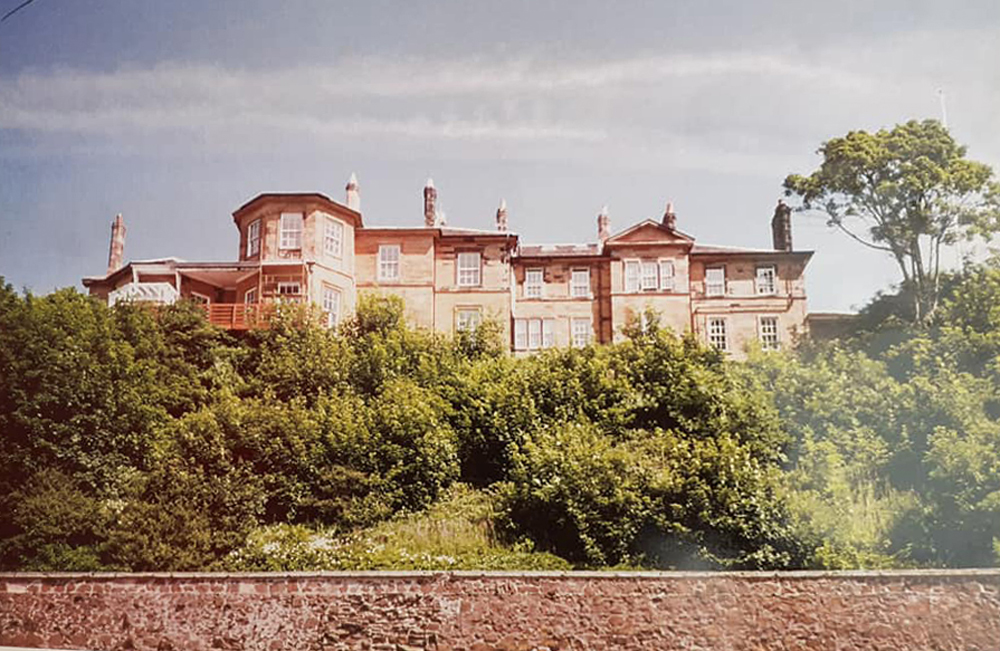
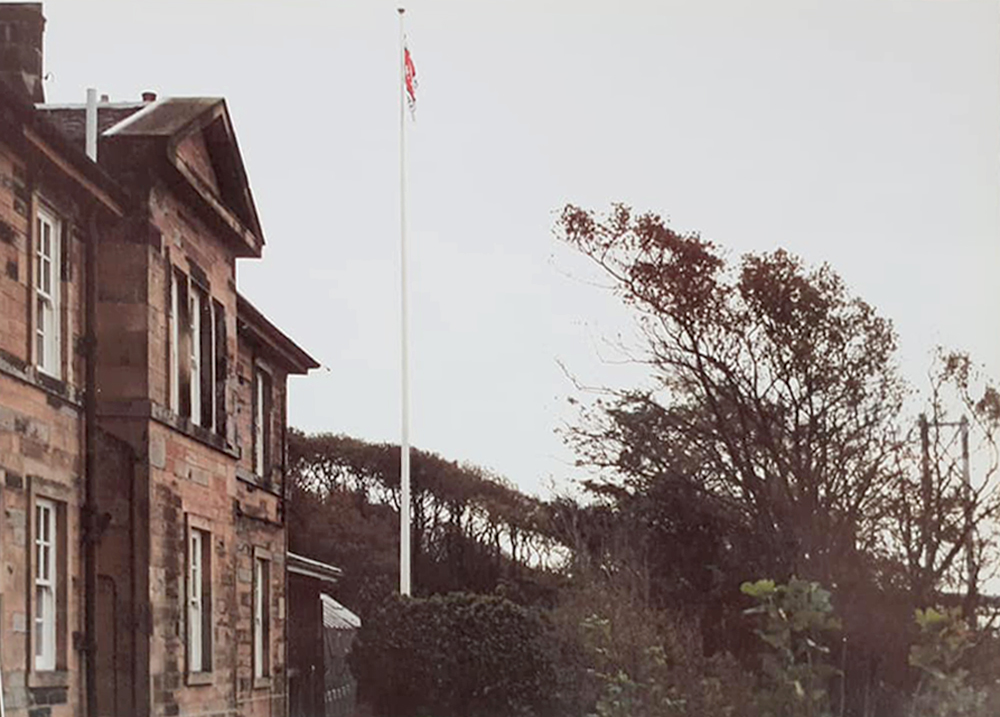
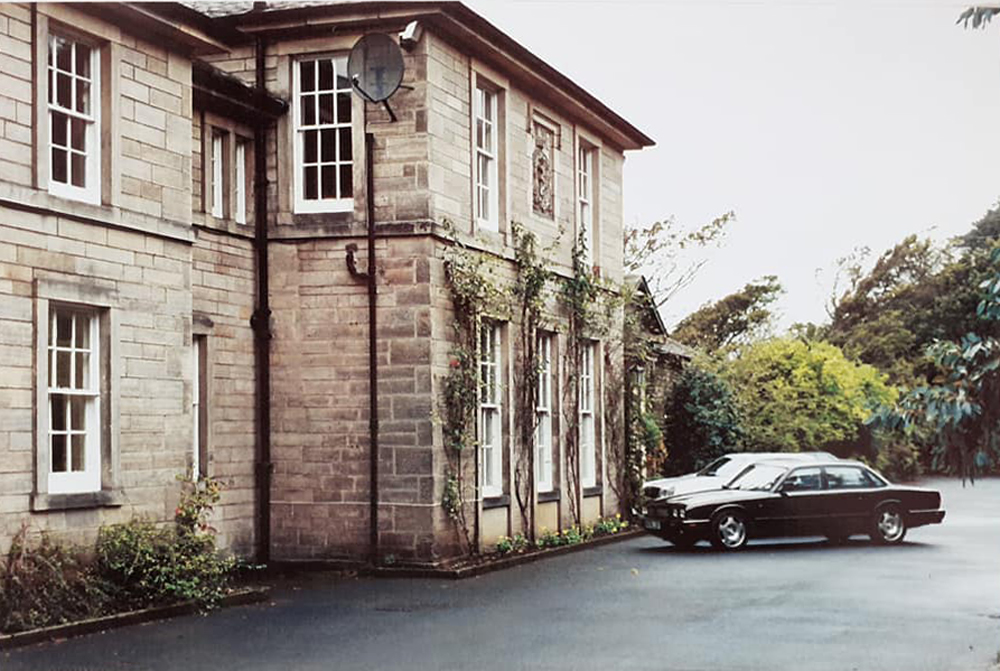
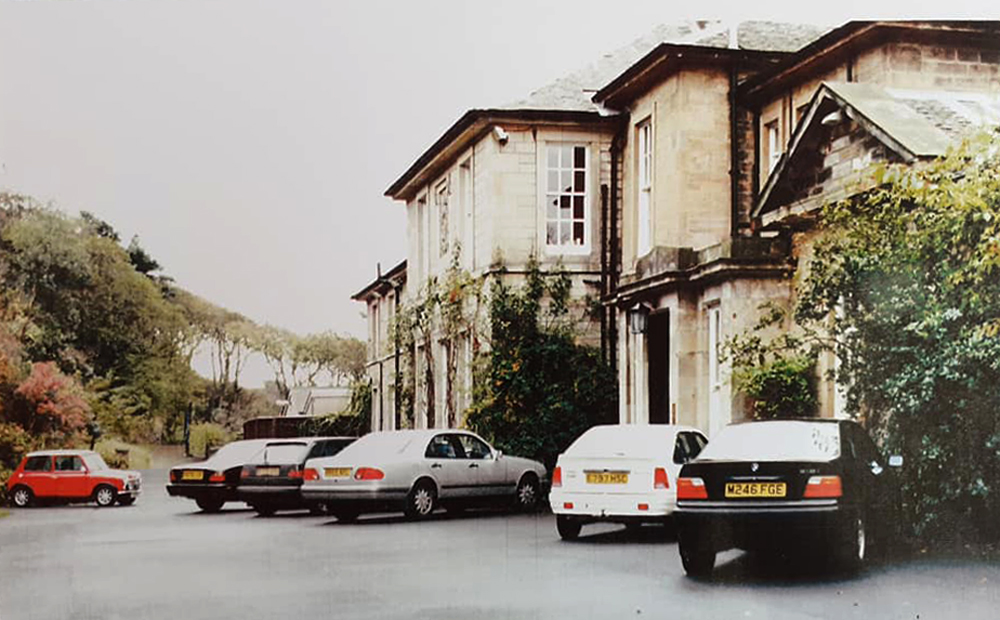
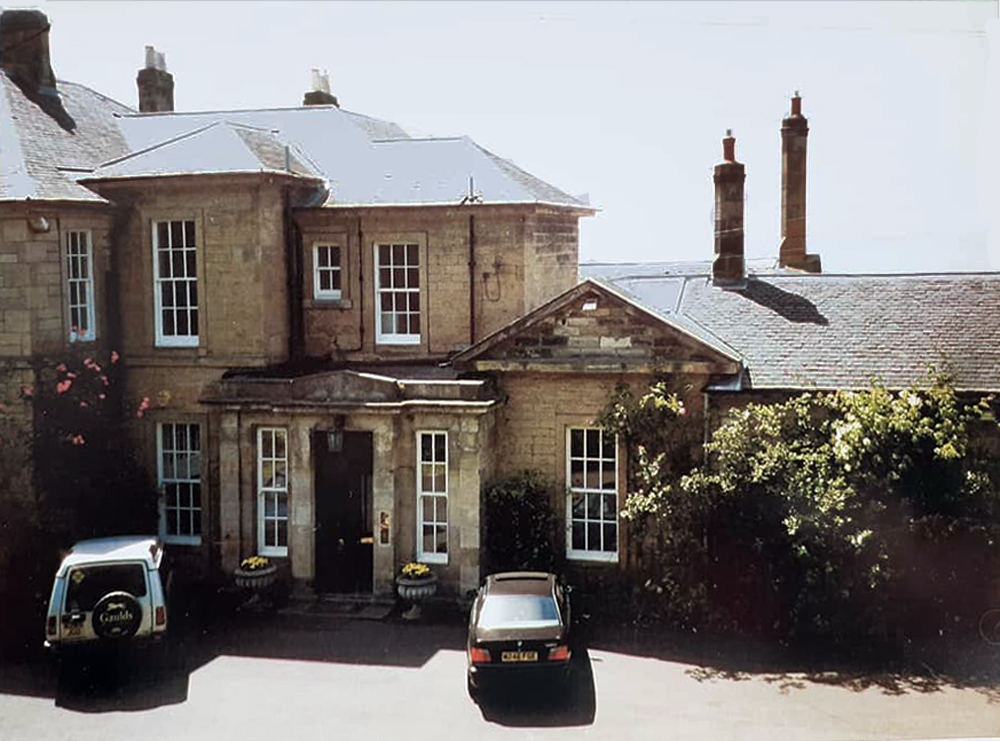
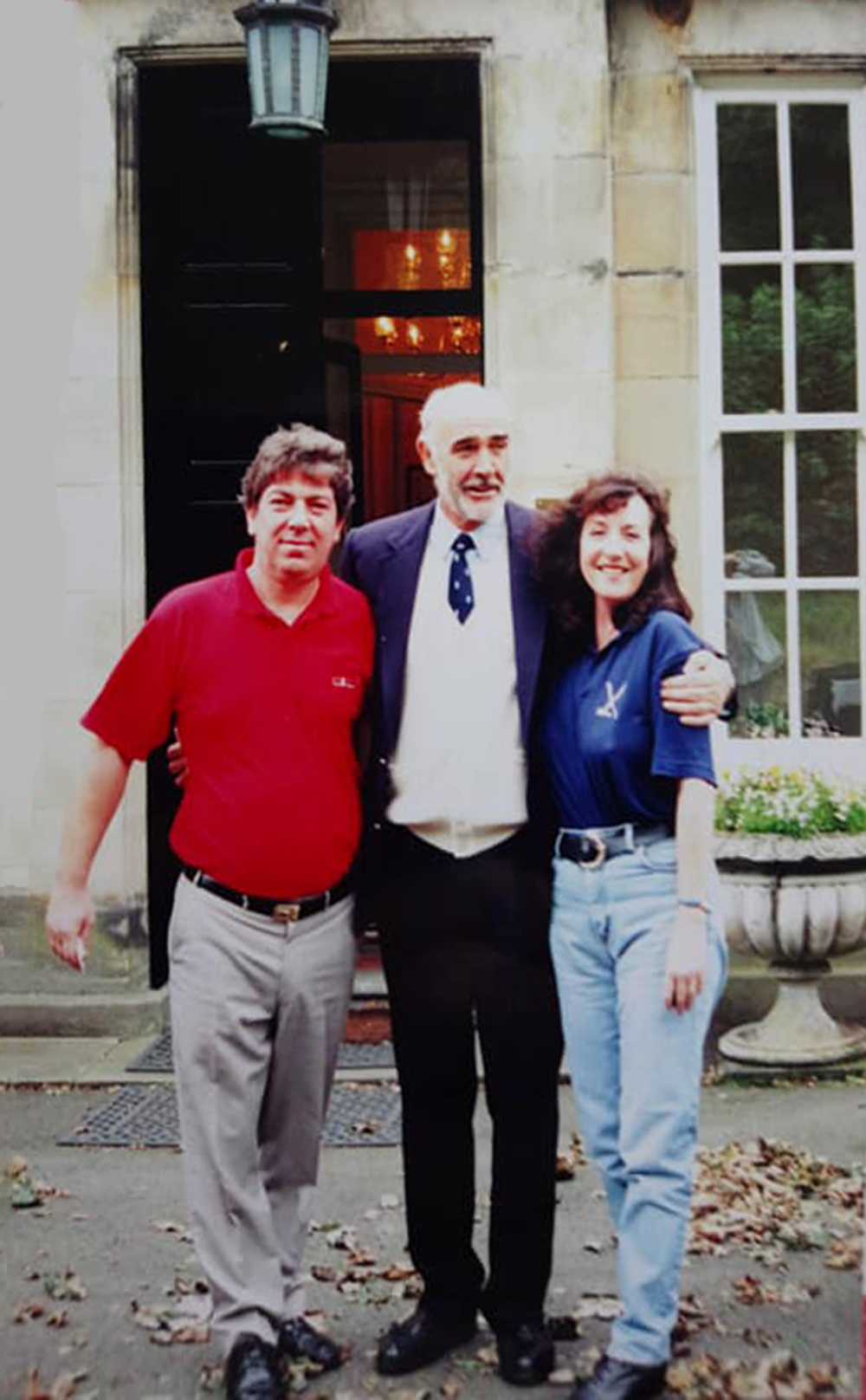
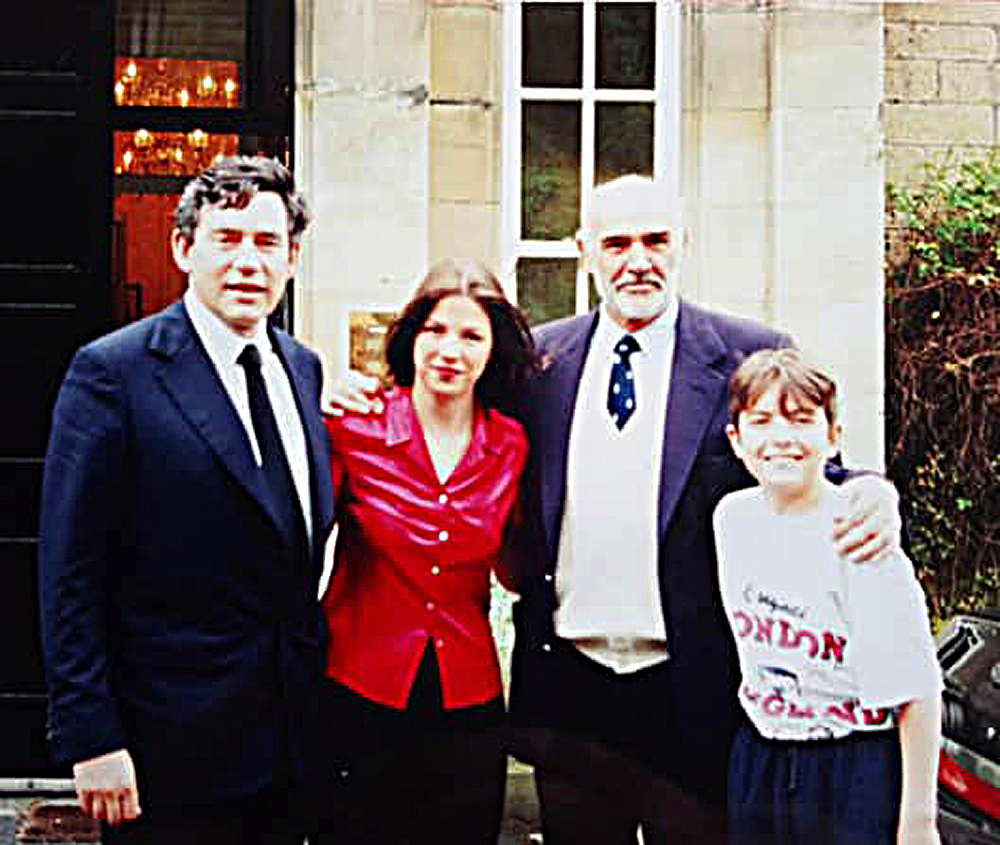
A Sad Coda
These two photographs were taken in March 2021
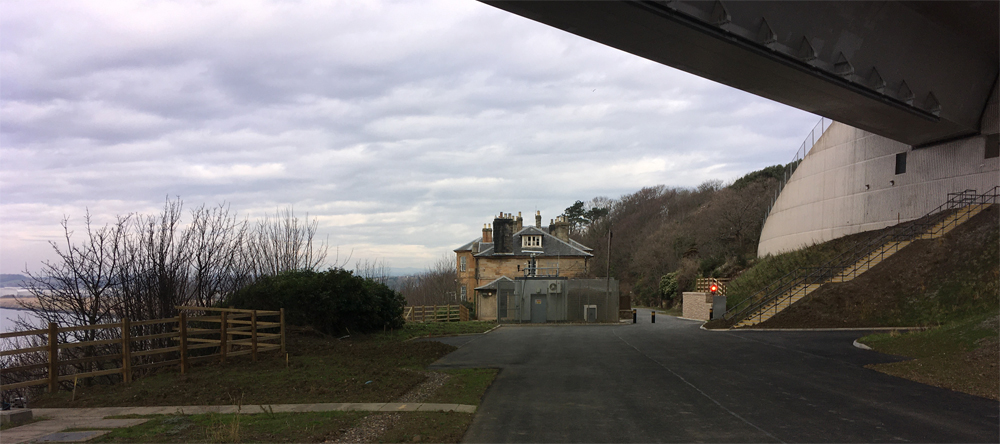
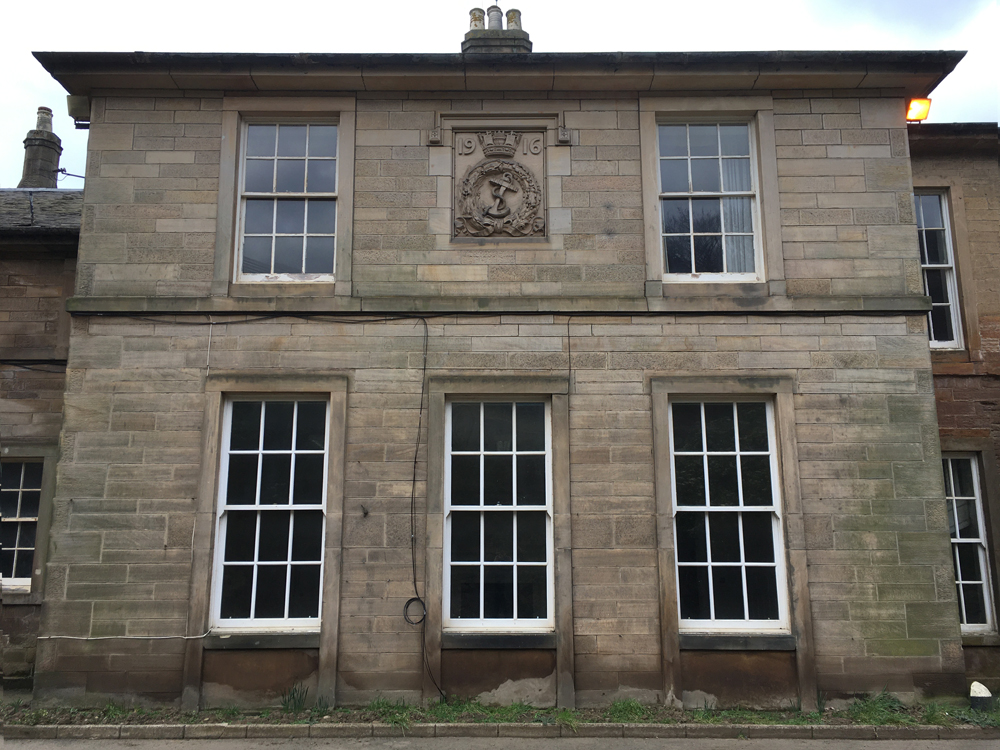
Sadly in April 2021 the house was vandalised. Almost every window was smashed.
Two weeks later the up-and-over garage doors were wrenched off.
The house and garage are now boarded up.
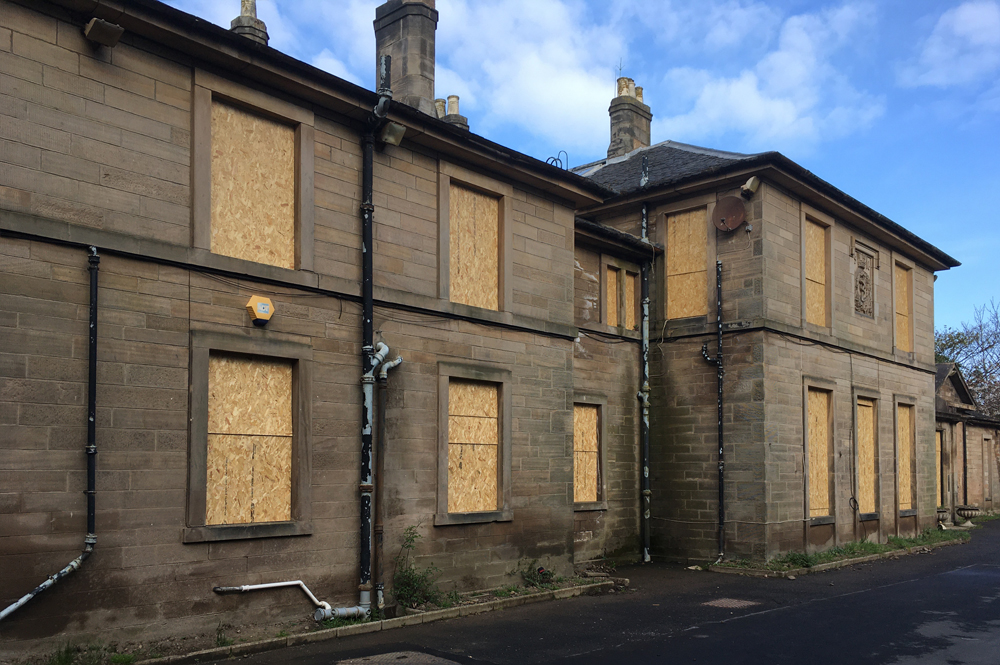
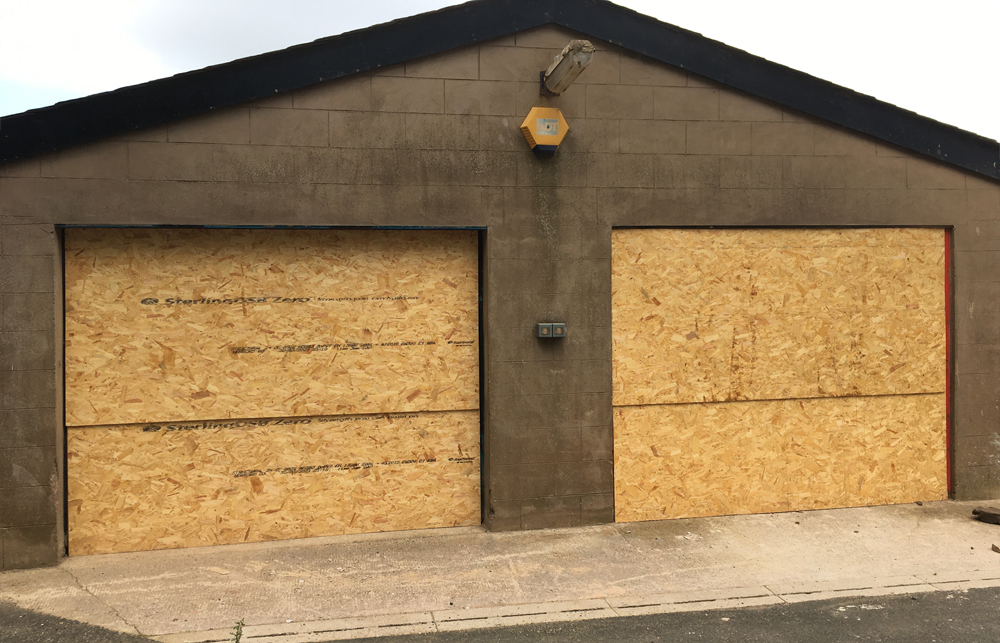
Boyd Williamson 23rd May 2021
top of page
